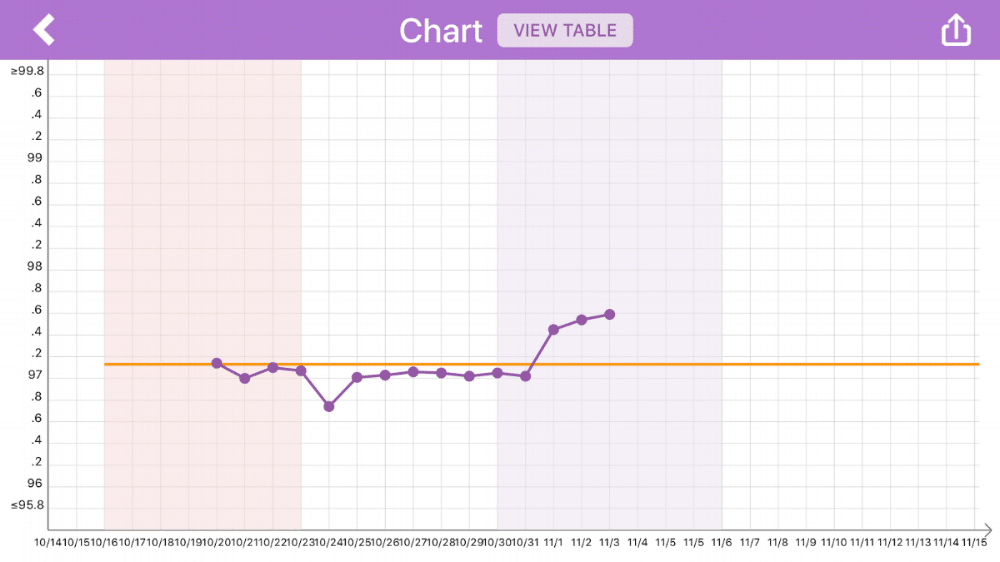For those of us who are struggling to fall pregnant, it may become necessary to track your basal body temperature. By tracking your basal body temperature, you’ll be able to better predict when you ovulate.
By knowing when you are most fertile, you can figure out the best time to conceive.
What is Basal Body Temperature?
Your basal body temperature describes your temperature when you are at rest. Basal body temperature, also known as BBT, can increase slightly when you are ovulating.
We are at our most fertile in the two to three days before ovulation. By keeping track of your basal body temperature, you can make an educated guess of when you’re most likely to ovulate and when you will be at your most fertile. Knowing this, you can plan intercourse.
Incidentally, tracking your body temperature can also be effective if you’re trying not to get pregnant. By avoiding sex on days when you are most fertile, you can reduce your chances of getting pregnant. However, do keep in mind that this method is not fool-proof. If you are truly trying to prevent pregnancy, always use a backup method of birth control.
How To Effectively Track Your Basal Body Temperature?

Before you start the process, understand that tracking your basal body temperature is easy to do, but it will take a daily commitment. If you cannot commit to checking your temperature, this will not be effective.
Here’s how to start:
-
Take Your Temperature Every Morning While Still In Bed
Your temperature must be taken when you are at rest, so the best time to do so is first thing in the morning.
You can choose any BBT thermometer. Regardless of what you choose, stick to the same method.
There are also several helpful apps that will make tracking easy.
-
Stay Consistent With Your Reading Time
Take your temperature reading as close to the same time every day. Try to stay within 30 minutes of your average time.
If it becomes necessary for you to set an alarm clock to stick to the same time daily, do so.
You should have a minimum of five hours of sleep before measuring.
-
Plot Your Readings On A Chart
From the start, track your thermometer readings on a chart. You can use a fertility tracking app, or track it yourself on graph paper or a free BBT chart printable.
Over time, you will be able to see a pattern emerge.
In particular, look for a change in your recorded temperature of about 0.4 degrees over a 48-hour period. If the adjustment stays constant for three days or longer, this is likely a sign that you are ovulating.
-
Plan Sex For Your Most Fertile Days
As you look at your graph over time, you will be able to make predictions.
Sperm can survive for up to five days inside your body. Knowing this, you should aim to have sex on your fertile days. Approximately two days before you expect your basal body temperature to rise, you’ll be at your most fertile.
If you are trying to prevent pregnancy, avoid intercourse on your most fertile days or use reliable contraceptives.












